Makemake – A Frozen World In The Outer Solar System
Possibly The Kuiper Belts Largest Object!
Discovered on March 31st 2005, Makemake contributed to the formation of the Dwarf Planets classification and ultimately the demotion of Pluto! Orbiting beyond Neptune it is one of the largest Kuiper Belt objects and is believed to only have one moon and no atmosphere.
Fast Fun Summary Facts!
- Discovered: March 31st 2005 by a team led by Mike Brown
- Name: Makemake – God of fertility to the Rapa Nui people
- Size: 1,430 km diameter (2/3rds the size of Pluto)
- Length of Day: Estimated from lightcurve analysis to be 7.8 hrs
- Number of Moons: One– MK2 (a nickname from the discovery team)
- Distance From Sun: 45.7 AU (varies between 38.6 – 52.8 AU)
- Length of Year: 309 Years
- Orbital Speed: 4.419 km/s
- Surface Temperature: – 240 °C (not much higher than absolute zero!)
- Surface Material: Frozen methane, ethane and nitrogen
Other Interesting Fun Facts About Makemake!
- The name Makemake was given to the newly discovered dwarf planet to maintain the connection to its discovery shortly after Easter. Makemake is the creator of humanity and god of fertility to the Rapa Nui people who live in the Southeast Pacific on Easter Island.
- Interestingly it has been calculated that Makemake is the only other dwarf planet in the outer Solar System that was bright enough in 1930 to be discovered when Pluto was during Clyde Tomaugh search for trans-Neptunian objects. However, in defence of Clyde, at the time Makemake was located in front of the bright Milky Way so it would have been near impossible to discover!
- Makemake, like the other dwarf planets discovered (except for Ceres in the Asteroid Belt), orbits in the frozen zone of ice and rock are known as the Kuiper Belt as is considered a classic example of a KBO.
- Makemake’s orbit is comparable to that of Haumea and at 29° is highly inclined to the ecliptic (the plane the planets orbit around the Sun which represents the likely accretion disc) with a fairly circular shape having an eccentricity of about 0.16. In the 2033 Makemake will reach its aphelion (furthest point in its orbit from the Sun).
- The Hubble Space Telescope discovered the tiny moon MK2 in 2015 and estimated that it orbits 21,000 km (13,000 miles) from Makemake with a diameter of 175 km. Discovery of natural satellites makes estimating the mass of the primary body much easier due to orbital mechanics!
- On the 23rd of April 2011, Makemake passed in front of a bright star (in astronomy this is called an occultation!) giving scientist an opportunity to observe if an atmosphere was present. Surprisingly there was no evidence of an atmosphere, there was expected to be a thin one similar to Pluto.
- On account of its reddish-brown colour, it’s believed it contains frozen methane, ethane and nitrogen on the surface. Volatile compounds are likely to be solids on such a cold object.
- If you wanted to see Makemake for yourself, it would be very difficult as at an apparent magnitude of 17 it is extremely faint and you would need a good high-end amateur telescope to resolve the little icy dwarf planet. At least it’s brighter than Haumea and Eris though!
- If NASA or another space agency planned to send an exploratory probe to flyby Makemake it has been calculated to take at least 16 years to travel there, even with a Jupiter flyby for a gravitational slingshot!
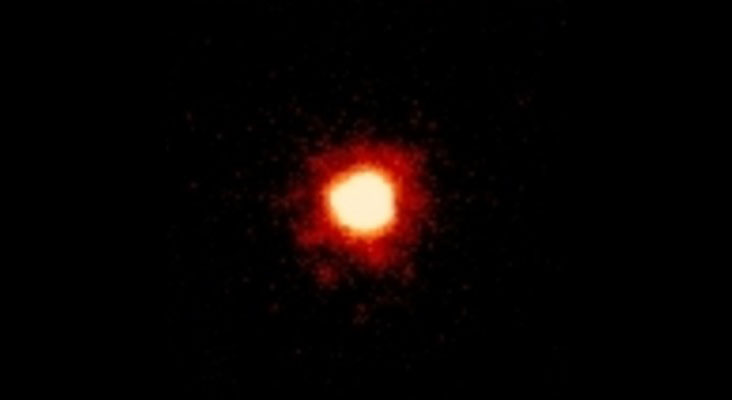
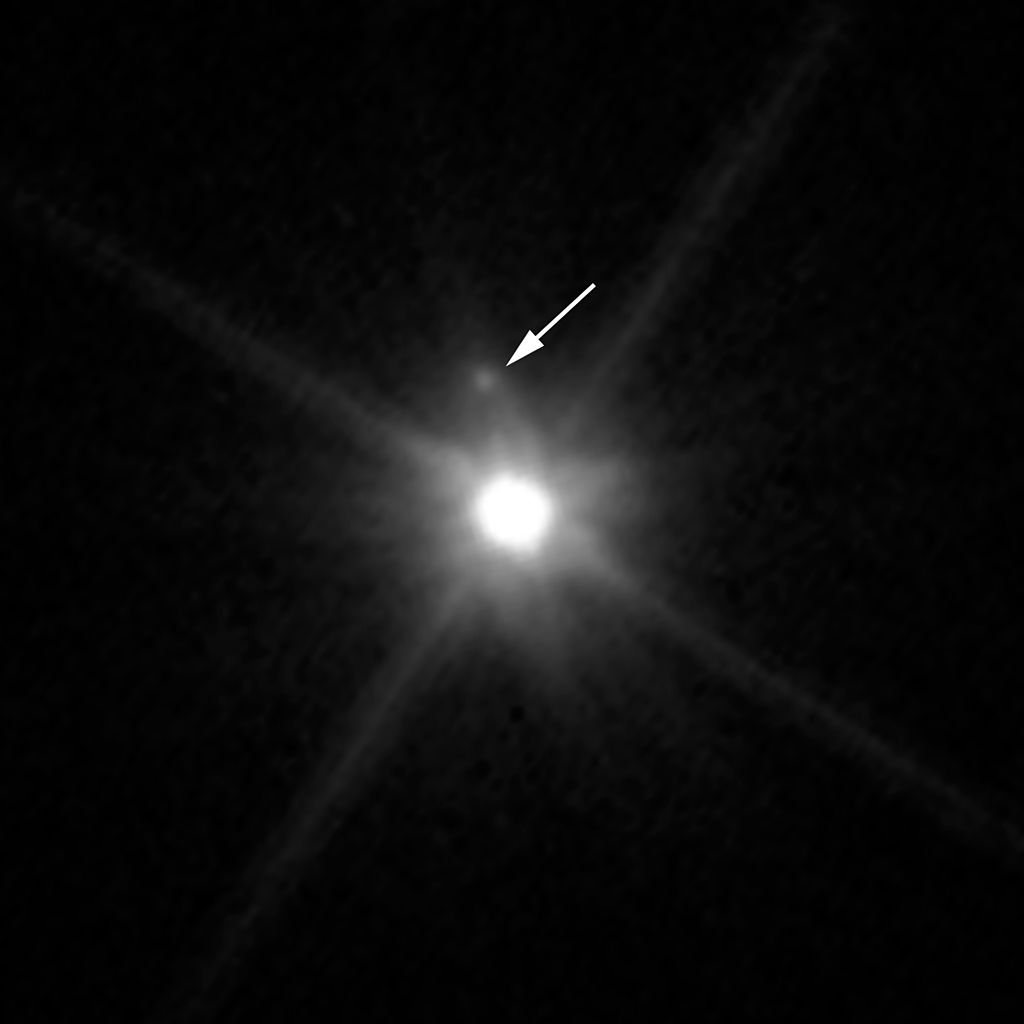
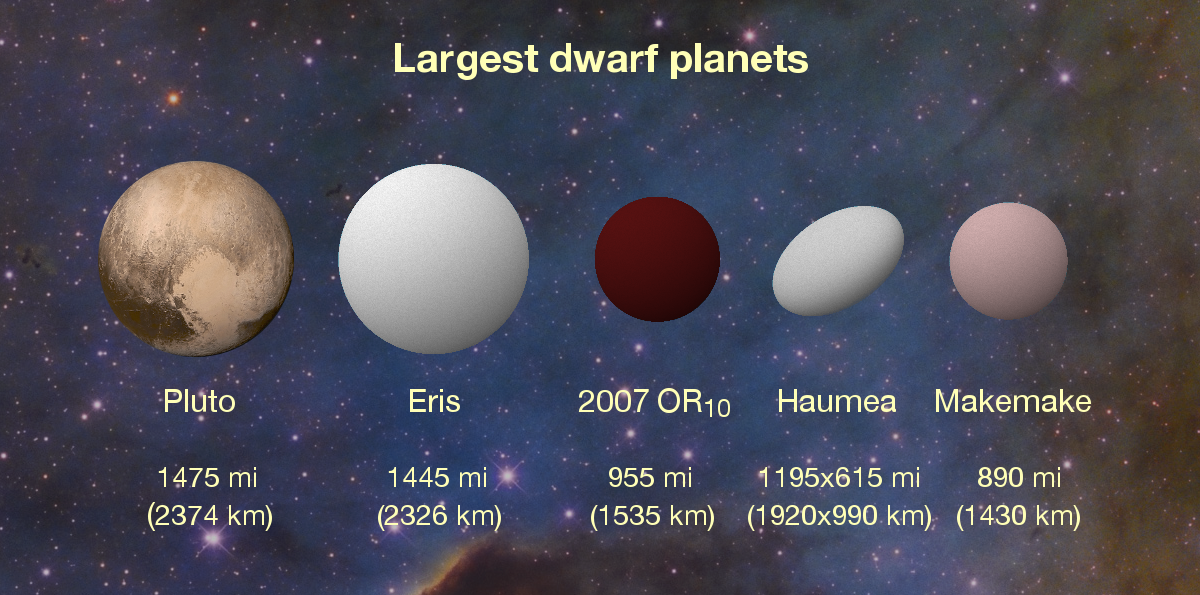
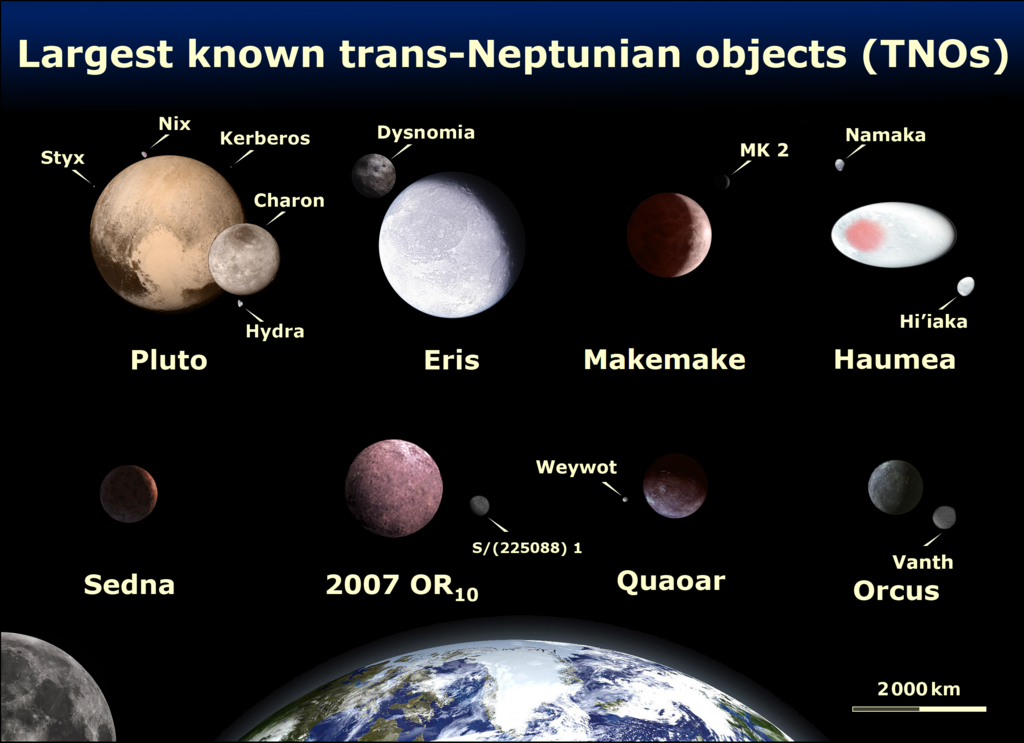
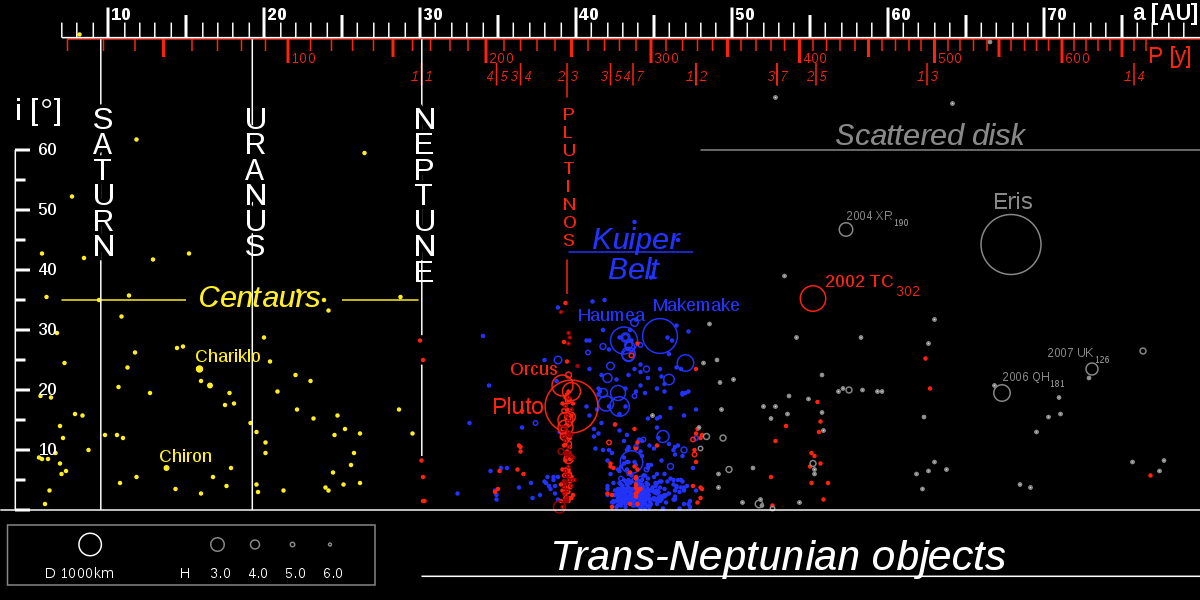
Makemake
Makemake And Its Moon
Largest known Dwarf Planets
Trans-Neptunian Objects
The Trans-neptunian objects



